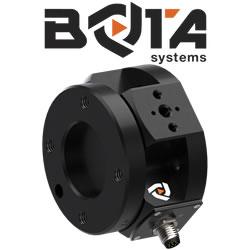RoboUniverse San Diego 2015
Four Market Forces That Will Shape Robotics Over The Next Year
HRI Case Study of Wireless Control: 5D Robotics
Getting Started with Collaborative Robots - Part 3 - Get the team on board with robots
'Rushing into robotics revolution without considering impact,' warn scientists
Building the Steam Controller
IREX - Japan Robot Exhibition Expo Report
'Darwin' the thinking robot teaches itself how to walk, just like a child
The New Family Member: A Robotic Caregiver
Getting Started with Collaborative Robots - Part 2 - How to Identify Potential Processes for Automation
IREX - Meet the Japanese robots that do what humans can't
Road to Robotic Parking Is Littered With Faulty Projects
Getting Started with Collaborative Robots? Part 1 - What can collaborative robots do?
Father of Robotics Joseph F. Engelberger Dies at Age 90
Festo's R&D Timeline - Part 4
Records 2611 to 2625 of 3553
First | Previous | Next | Last
Featured Product

